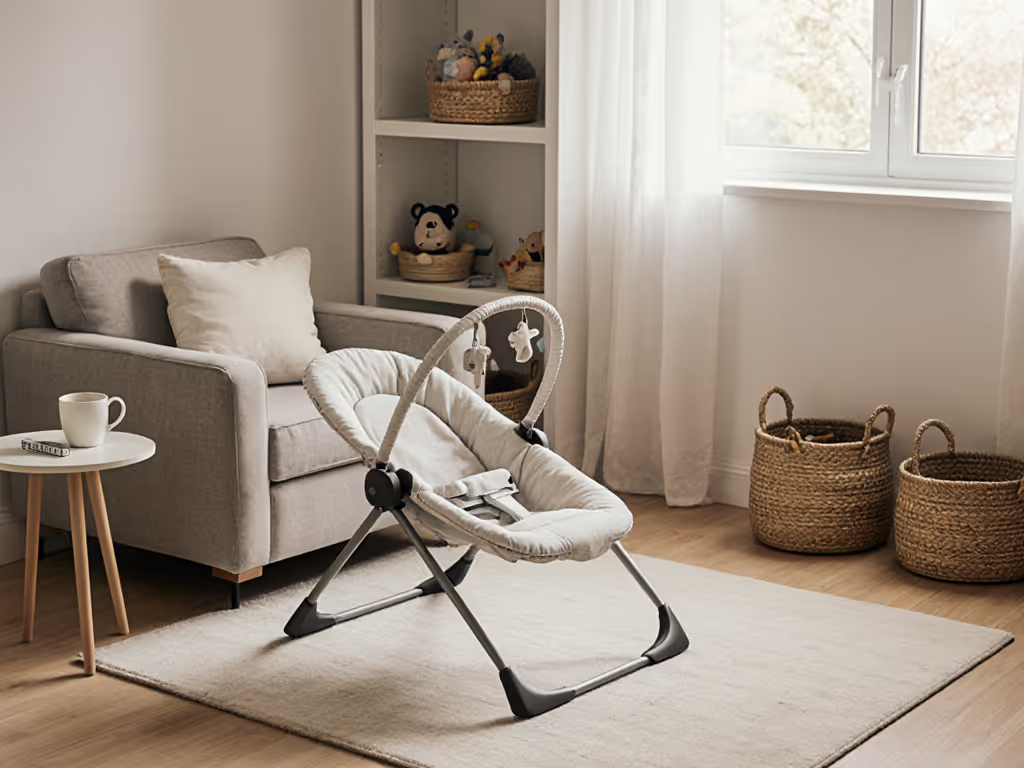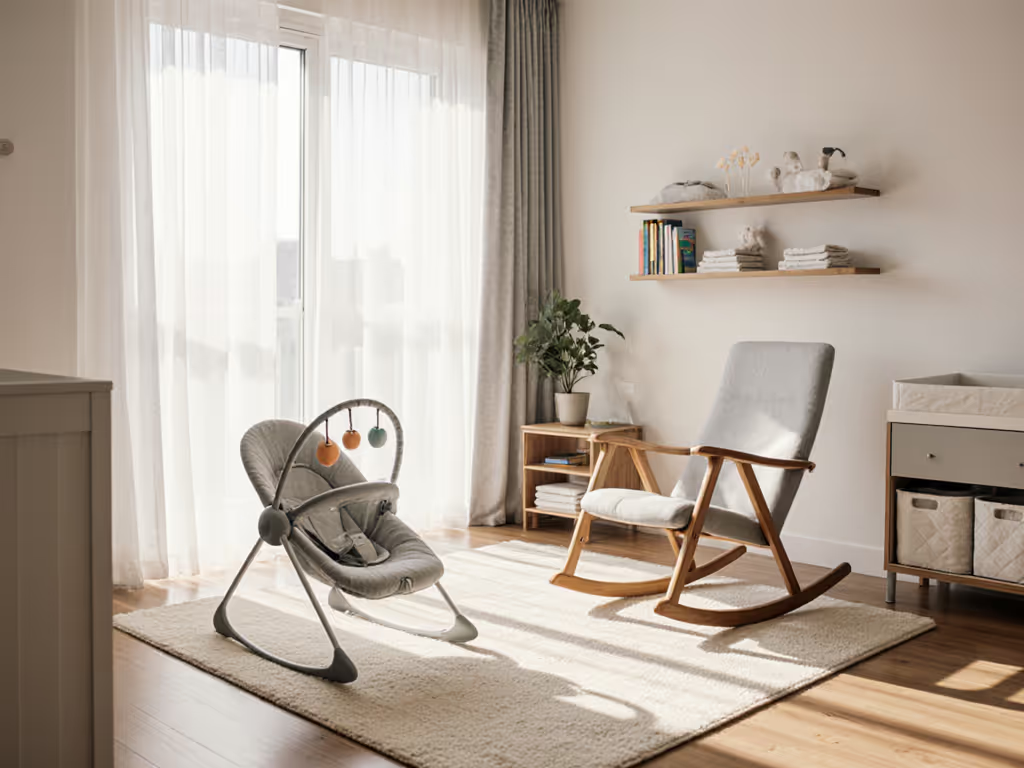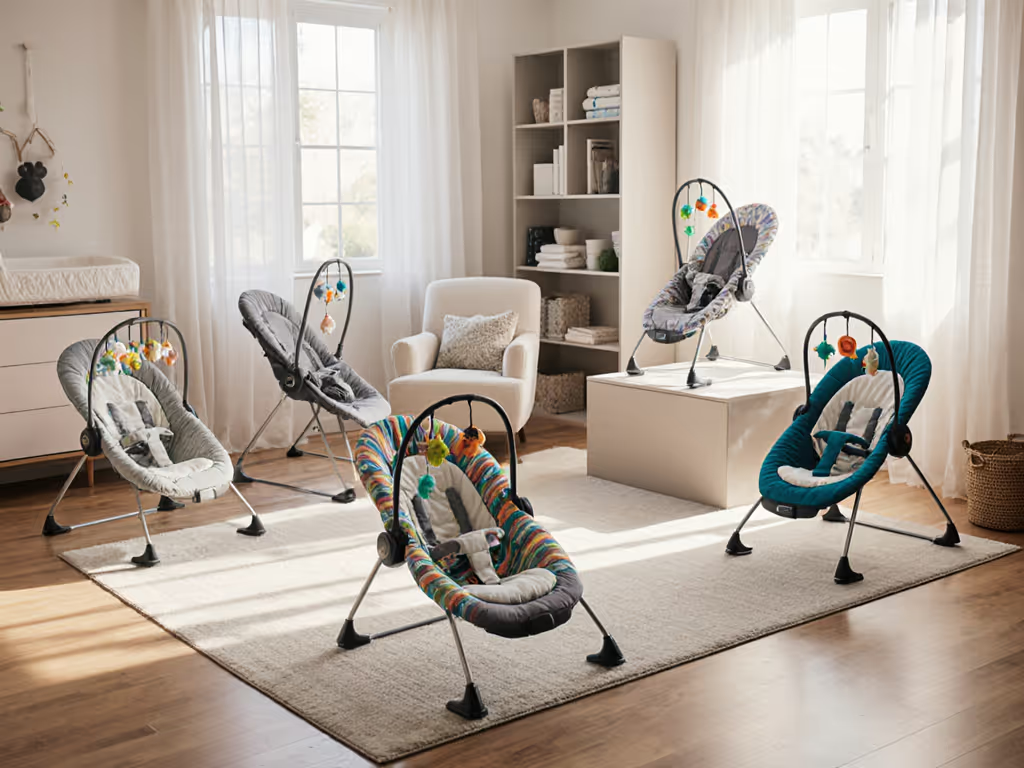
Key Materials in Baby Bouncers Explained
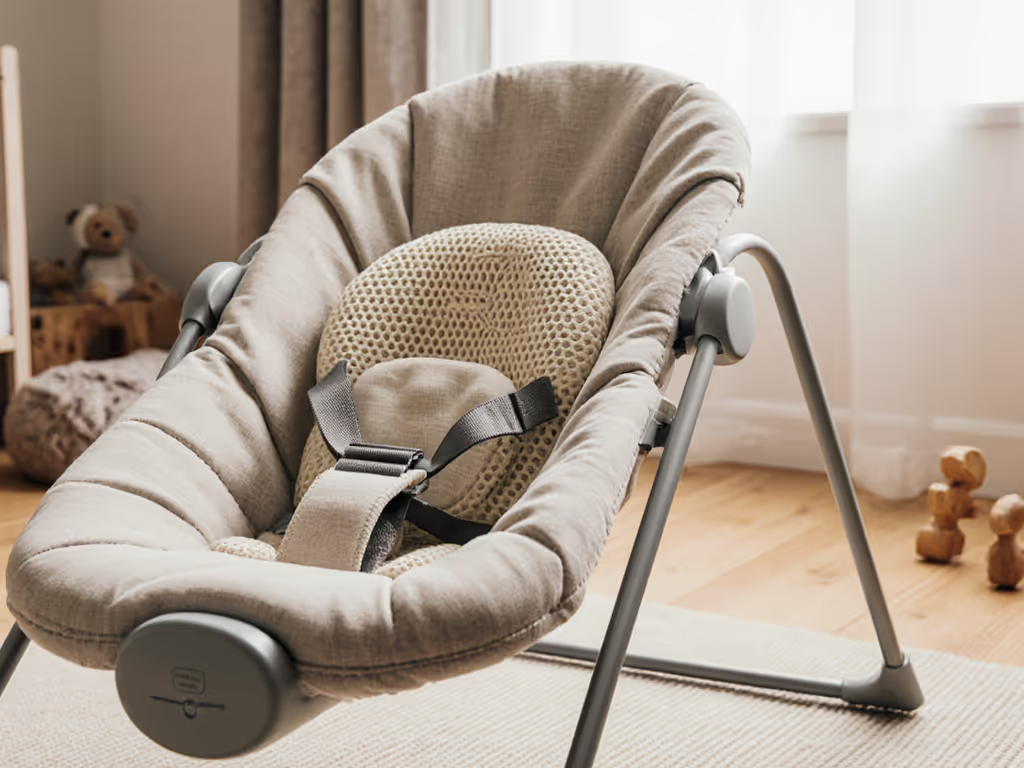
Did you know that over 85 percent of parents say material safety is their top concern when choosing a baby bouncer? Every detail matters when it comes to what supports and touches your child, from the frame down to the fabric. The right blend of materials can offer lasting comfort, strong support, and peace of mind, helping you choose a bouncer that stands up to daily use and keeps your baby safe and content.
Key Takeaways
| Point | Details |
|---|---|
| Material Selection | Choose baby bouncers with a combination of strong, safe materials like metal and BPA-free plastics for durability and structural integrity. |
| Fabric Importance | Opt for hypoallergenic, breathable fabrics that are machine-washable and environmentally friendly to ensure comfort and safety for your child. |
| Safety Certifications | Look for products certified by EN12790:2009, Oeko-Tex Standard 100, and GreenGuard Gold for assurance of safety and non-toxic materials. |
| Sustainable Choices | Consider eco-friendly materials such as FSC-certified wood and organic cotton to minimize health risks and environmental impact. |
Core Materials Used in Baby Bouncers
When selecting a baby bouncer, understanding the core materials is crucial for ensuring your little one's safety, comfort, and durability. Plastic, metal, and fabric form the primary trio of materials that define a bouncer's performance and reliability.
The structural framework typically relies on lightweight yet robust materials. Plastic components dominate bouncer designs due to their incredible versatility. BPA-free plastics provide a safe, durable foundation that resists wear and maintains structural integrity. Manufacturers often complement plastic with metal reinforcements like aluminum or steel, which add critical strength without substantial weight. These metal elements are strategically placed in the frame, providing stability and preventing potential structural failures.
Fabric selections represent the bouncer's comfort zone. Modern bouncers feature hypoallergenic textiles designed for maximum infant comfort. Cotton, polyester, and organic blends offer breathability and softness. The latest trends emphasize materials that are:
- Machine-washable for easy maintenance
- Antimicrobial to reduce bacteria growth
- Made from recycled or sustainable sources
- Gentle against sensitive infant skin
Parents should prioritize bouncers with materials that balance safety, comfort, and practicality. Look for certifications, understand fabric compositions, and consider how each material contributes to your baby's overall experience.
Types of Frame Materials and Durability
The frame of a baby bouncer is its foundational support system, determining not just the product's stability but its long-term performance and safety. Metal frames have emerged as the gold standard in bouncer construction, offering unparalleled strength and reliability for parents seeking dependable infant equipment.
Aluminum and steel dominate the metal frame landscape, each bringing unique advantages to baby bouncer design. Aluminum stands out for its lightweight yet robust characteristics. It resists corrosion, maintains structural integrity, and provides excellent weight distribution. Steel frames, while slightly heavier, deliver exceptional strength and can typically support higher weight capacities. These metal constructions ensure the bouncer remains stable during infant movements, reducing risks of unexpected tipping or structural compromise.
Wooden frames represent an alternative approach that appeals to parents seeking natural, eco-friendly solutions. Crafted with non-toxic water-based finishes and carefully selected hardwoods, these frames offer:
- Natural aesthetic appeal
- Biodegradable material properties
- Excellent durability when properly maintained
- Seamless integration with modern home decor
- Potential for generational use with proper care
When evaluating frame materials, parents should consider factors beyond immediate visual appeal. The ideal frame balances weight capacity, material durability, safety certifications, and long-term performance. Inspect frame joints, understand weight limitations, and prioritize bouncers that demonstrate rigorous engineering and material quality.
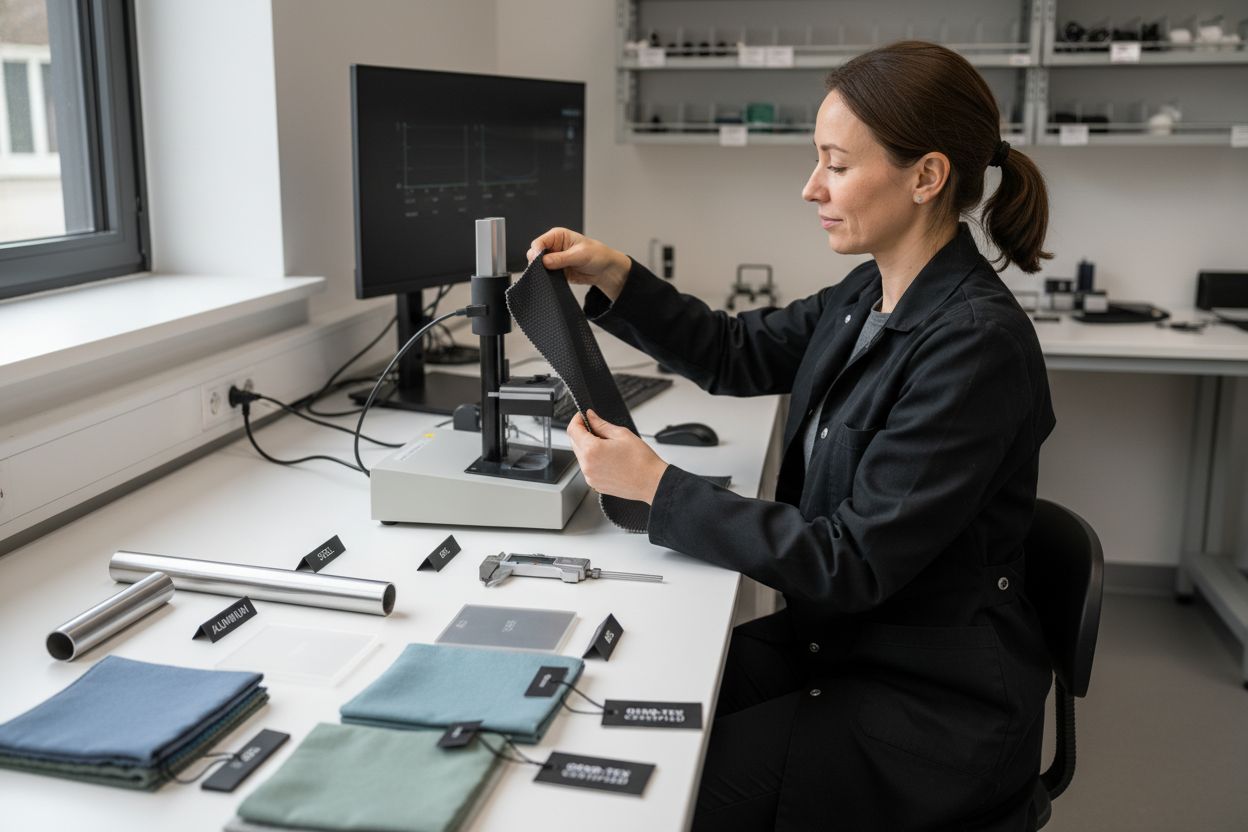
Here's a comparison of common frame materials in baby bouncers:
| Frame Material | Key Benefits | Drawbacks |
|---|---|---|
| Aluminum | Lightweight<br>Corrosion-resistant<br>Strong support | Higher cost than plastic |
| Steel | Very strong<br>High weight capacity<br>Stable | Heavier<br>May rust if not coated |
| Wood | Natural look<br>Biodegradable<br>Long-lasting with care | Heavier<br>Requires regular maintenance |
| Plastic | Lightweight<br>Affordable<br>Resists wear | Lower strength<br>May crack over time |
Fabric Options and Breathability Factors
The fabric of a baby bouncer isn't just about aesthetics – it's a critical component that directly impacts your infant's comfort, safety, and overall experience. Breathability stands as the cornerstone of fabric selection, with modern manufacturers prioritizing materials that ensure optimal air circulation and temperature regulation.
Cotton and polyester blends dominate the fabric landscape, offering a strategic balance between comfort and functionality. These materials provide softness against delicate infant skin while delivering practical benefits. Hypoallergenic cotton variants reduce potential skin irritation, while polyester introduces durability and easier maintenance. Advanced fabric technologies now incorporate moisture-wicking properties and antimicrobial finishes, addressing parents' growing concerns about hygiene and comfort.
Eco-conscious parents are increasingly drawn to sustainable fabric options that prioritize both infant health and environmental responsibility. Organic fabrics like:
- Organic cotton
- Bamboo fibers
- Recycled polyester
- Wool blends
These materials offer exceptional breathability while minimizing exposure to harmful chemical treatments. Look for Oeko-Tex certified textiles, which guarantee freedom from toxic substances and provide an additional layer of safety for your little one.
When selecting a baby bouncer, scrutinize fabric characteristics beyond surface appearance. Consider machine-washability, quick-drying capabilities, and how well the material maintains its shape and color after repeated cleaning. The ideal fabric should feel soft, allow air circulation, resist bacterial growth, and withstand the inevitable spills and messes of infant care.
Safety Certifications and Non-Toxic Standards
Ensuring your baby's safety goes far beyond visual inspection. Safety certifications represent a critical layer of protection, providing parents with confidence in their bouncer's design, materials, and overall structural integrity. These rigorous standards are the silent guardians that protect your most precious cargo.
The European Standard EN12790:2009 stands as a comprehensive benchmark for baby bouncer safety. This certification meticulously examines critical aspects like harness strength, tipping resistance, and locking mechanisms. It doesn't just evaluate physical structure – it also scrutinizes chemical safety, ensuring that every component meets stringent health requirements. Complementing these structural assessments, Oeko-Tex Standard 100 certification provides an additional shield, guaranteeing textiles are free from harmful substances that could potentially irritate an infant's sensitive skin.
Advanced safety standards now extend beyond traditional measurements. GreenGuard Gold certification represents a cutting-edge approach to product safety, focusing on:
- Extremely low chemical emissions
- Elimination of volatile organic compounds (VOCs)
- Removal of phthalates
- Screening for heavy metal presence
For parents seeking the most comprehensive protection, look for additional certifications like Global Organic Textile Standard (GOTS). This certification ensures not just material safety, but also ethical production standards. It verifies organic fiber content, prohibits toxic dyes, eliminates formaldehyde, and mandates responsible manufacturing practices. When selecting a baby bouncer, these certifications aren't just labels – they're your assurance of a product designed with your child's absolute safety in mind.
Care, Cleaning, and Material Longevity
Proper maintenance is the secret to extending your baby bouncer's lifespan and ensuring continued safety and performance. Material care isn't just about keeping things looking nice – it's about preserving the structural integrity and hygiene of a critical piece of infant equipment.
Machine-washable components have revolutionized bouncer maintenance, offering parents unprecedented convenience. Removable seat covers certified by Oeko-Tex Standard 100 can typically be laundered at gentle temperatures, preserving fabric quality while eliminating bacteria, spills, and everyday wear. Pay close attention to manufacturer instructions, as different materials require specific cleaning approaches. Metal frames might need simple wiping with mild detergent, while fabric components often tolerate more thorough washing.
Longevity depends on strategic care practices. Consider these maintenance tips:
- Always air dry fabric components
- Avoid harsh chemical cleaners
- Inspect frame joints and connections regularly
- Store in cool, dry environments when not in use
- Replace worn or damaged components immediately
The durability of your baby bouncer hinges on consistent, thoughtful maintenance. Invest time in understanding each material's specific care requirements. Certification labels like bluesign Grade A or Oeko-Tex aren't just safety indicators – they're also guides to proper preservation. By treating your bouncer as a precision piece of infant equipment, you'll maximize its useful life and maintain the highest standards of safety and performance.
Comparing Sustainable and Conventional Materials
The baby product industry is experiencing a significant shift toward sustainable materials, driven by growing environmental awareness and concerns about potential health risks associated with conventional manufacturing approaches. Conventional materials like PVC, traditional plastics, and synthetic composites have long dominated baby bouncer production, prioritizing cost-effectiveness and mass manufacturing.
Synthetic materials such as standard plastics and polyesters typically offer lower production costs and immediate functionality. However, they often contain potentially harmful chemicals like phthalates and flame retardants that can pose long-term health risks. These conventional materials frequently lack biodegradability, contributing to environmental waste and potential ecosystem damage. In contrast, sustainable alternatives are emerging with compelling advantages. Eco-friendly bouncers now incorporate materials like:
- FSC-certified wood
- Recycled polyester fibers
- Organic cotton textiles
- Bamboo-based composites
- Natural, unpainted wood finishes
The sustainable materials revolution goes beyond environmental considerations. These alternatives often provide superior durability, reduced chemical exposure, and a more natural aesthetic. While initially more expensive, eco-conscious materials represent an investment in both infant health and planetary wellbeing. Manufacturers are increasingly recognizing that parents value products aligned with broader environmental and health principles, driving innovation in material selection and production techniques.
![]()
Find the Perfect Baby Bouncer Materials for Your Space and Lifestyle
Struggling to balance safety, comfort, and eco-friendly materials for your baby bouncer? We know that every detail matters, from frame durability to the breathability of fabrics. Many parents worry about harsh plastics, inconvenient cleaning routines, and the challenge of selecting non-toxic certified materials for their small living spaces. If this sounds familiar, you are not alone. Our article has broken down the complexities of material options so you can choose what is truly best for your baby.
Ready to put this knowledge into action? Explore our hands-on reviews and expert buying guides at Bouncer Lab for the latest in safe, compact, and thoughtfully designed bouncers. Discover easy-to-understand comparisons and practical tips by visiting our homepage, or dive deeper into our specific guides like our article on eco-friendly baby bouncer choices. Make an informed choice today and ensure every material touching your baby meets the highest standards for safety and comfort.
Frequently Asked Questions
What materials are commonly used in baby bouncers?
Baby bouncers typically consist of three core materials: plastic for the frame, metal for reinforcement, and fabric for the seating area. Plastic is versatile and BPA-free, while metal provides strength and durability. The fabric is designed for comfort and breathability, featuring hypoallergenic and easy-to-clean options.
How do I choose safe materials for my baby's bouncer?
When selecting a baby bouncer, look for safety certifications such as the European Standard EN12790:2009 and Oeko-Tex Standard 100. Choose products made with non-toxic materials, free from harmful chemicals like phthalates and flame retardants, and those with hypoallergenic fabrics to ensure safety and comfort for your baby.
What are the benefits of different frame materials in baby bouncers?
Metal frames, made from aluminum or steel, offer strength, stability, and higher weight capacities. Aluminum is lightweight and corrosion-resistant, while steel provides exceptional durability. Wooden frames appeal to eco-conscious parents and can be visually appealing but may require more maintenance. Plastic frames, while lightweight and affordable, may be less durable over time.
How can I maintain my baby bouncer for longevity?
To extend the lifespan of your baby bouncer, regularly clean machine-washable fabric components following manufacturer instructions. Air dry fabrics and avoid harsh chemicals. Regularly inspect the frame for any signs of wear and store the bouncer in a cool, dry place when not in use to maintain its integrity.

